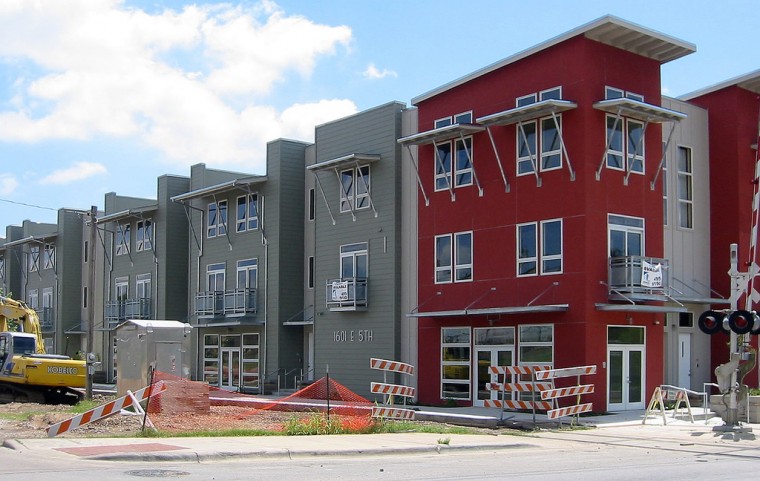
When developers work with public sector, everyone wins
Transit-oriented development is a trend with significant momentum in the United States. Because so many people depend on transit systems daily, mixed-use communities have been developed around boarding stations. These areas have become perfect targets for public-private partnerships that create new revenue for cities, port authorities, public hospitals and universities.

Photo by Payton Chung licensed under CC BY 2.0.
Funding is never adequate as public officials attempt to provide day-to-day services and simultaneously manage critical needs – transportation, housing, utilities, healthcare, etc. But as they look at transit-oriented development, there is reason to hope. Prime locations in and around transit stations are in high demand by developers. Many governmental entities have launched, or are planning to launch, public-private partnerships to enhance commuter benefits as well as create a new revenue source for public coffers.
The George Washington Bridge Bus Station, located in Manhattan, was originally built in 1963. The station now serves 15,000 to 20,000 commuters and visitors each day. It provides commuter and intercity bus service as well as connections to New York City subways and buses. In an effort to improve the atmosphere in and around the bus station as well as create new revenue, the Port Authority of New York and New Jersey launched an initiative with private-sector partners to significantly upgrade the space. The project includes a modern passenger pavilion, a reconfigured bus concourse and a state-of-the-art passenger information system. Bus operations will be consolidated to the rooftop level so the lower levels can be opened up for 120,000 square feet of new retail space and a wide range of food and service options that will generate millions of dollars in regional economic activity.
Mockingbird Station, a Dallas Area Rapid Transit (DART) Light Rail station, originally opened in 1997. Located at Mockingbird Lane and North Central Expressway, it was the first Texas transit-oriented development project. The neighborhood now offers retail, restaurants, services, events and entertainment options for commuters and residents, along with loft apartments and an office building.
City leaders and university officials are also finding revenue-producing opportunities around transportation hubs. Retail establishments of all types are eager to locate nearby because of the customer traffic. They are also willing to pay hefty rental fees and split revenues with public entities. Developers love to be selected to handle such projects.
Redevelopment projects are also ideal for public-private partnerships. Hemisfair Park in San Antonio was the site of the official 1968 World’s Fair. Located in the heart of downtown, it is currently undergoing redevelopment to transform the area from an historic fairground to an urban district with multiple parks, residences and local businesses. The city owns the land and will reap great rewards as private partners bring in retail establishments. Citizens will be able to live downtown, enjoy city parks and participate in all types of events in the area.
Universities sometimes partner with cities and together they collaborate with private-sector partners to launch projects that result in benefits to all three groups. The city of West Lafayette, Ind., wanted to transform State Street into a more desirable destination. The university wanted a more attractive area that would appeal to prospective students. The city needed all kinds of upgrades in the area. A partnership that began with the city and Purdue University expanded to private-sector partners and the State Street Redevelopment Project was launched. The city and university will soon have a completely new destination area that will benefit both financially. Private-sector partners will finance, design and construct a new and revitalized State Street.
Public-private partnerships were slow to materialize in the U.S., but all types of collaborative initiatives are now becoming quite common. They create jobs, economic vitality, public-sector revenue and enhanced citizen benefits. They do not require public funding or create debt … and new assets become the property of governmental entities. One has to wonder why hundreds more are not launched.
Contact SPI’s team of government procurement experts today to learn more about public-private partnerships.
